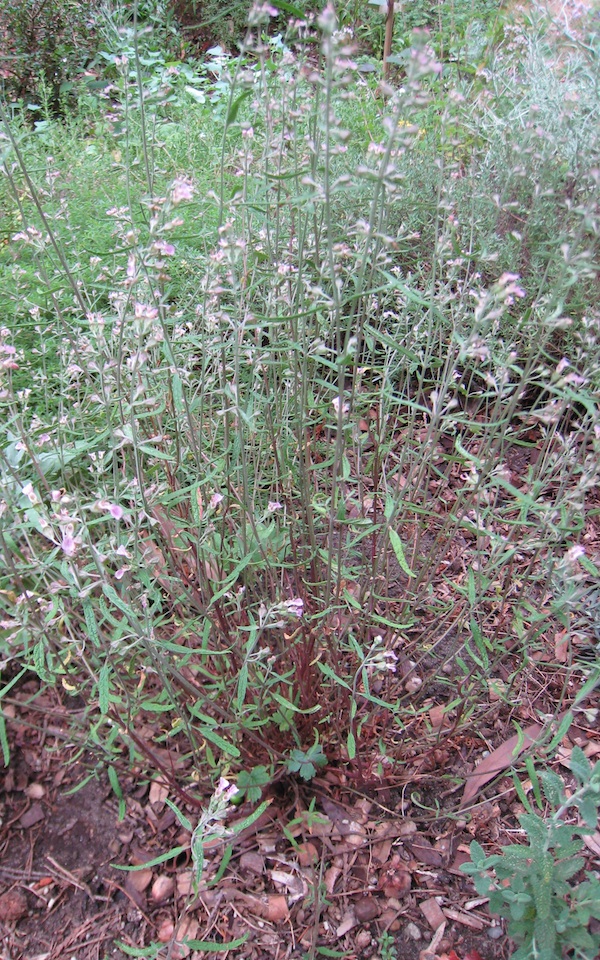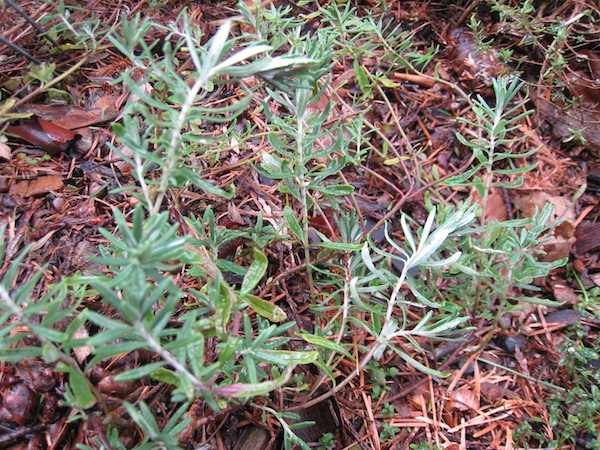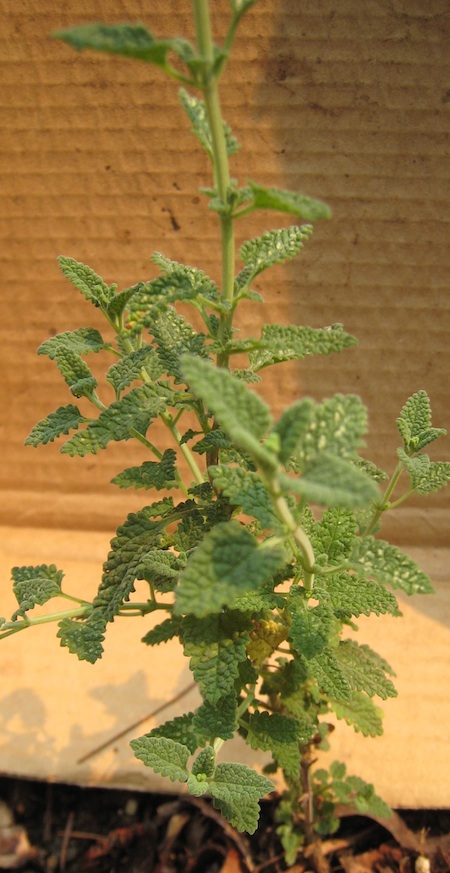| If you love highly aromatic plants, Teucrium is a genus with many to delight you. Already, I featured one as my July 2004 plant-of-the-month: Teucrium Marum, the Cat Thyme --far more potently attractive to cats than the commonly grown Nepeta species called Catnip. |
| Since, in my mid-April Open Garden & Plant Sale, I shall offer for sale the aforementioned Teucrium Marum, plus three additional Teucrium species, I here write about those three, both to make myself a memento, and to share with you what I learned. Sorry that I lack good photos. But you can do a Google "image search" and thereby see plenty. |
All three species are rarely cultivated Mediterranean aromatic perennial herbs or shrublets. They prefer, if not require, alkaline rather than acid soil, much sun, good drainage, and can get by in Seattle summers with no watering, once established. I am selling my specimens in an effort to shift focus from so many aromatic plants to more edible ones. Teucrium have been prized in herbal medicine, loved for their beauty and fragrance, but are not eaten in the kitchen --in fact some are toxic. A few have been used to flavor bitter liqueurs.
|
| Balearic, Camphor-scented or Slender-leaf Germander |
| Teucrium asiaticum L. 1767 |
= T. lancifolium (Moench) Boiss.
|
This is the least attractive visually, least cold-hardy, but by far the most aromatic. It is my favorite. Native in Spain's Balearic Islands, its Majorcan name is Brutònica. The specific name asiaticum is unfortunate --being flat-out wrong, since Asia is far to the east of where the plant grows. In contrast, the specific name lancifolium is right on, referring to its markedly slender leaves, which are dark green and strongly textured. Some people find the plant unpleasantly fragrant. Like it or not, it is strongly scented, vigorous, and sprawls wider than tall. Its flowers are subtle rather than showy, small, and pink. Mail-order U.S. nurseries that I am aware of supplying it include: Joy Creek Nursery, Secret Garden Growers, and Well-Sweep Herb Farm.
|
| Fruity, Majorcan or Pineapple Germander |
| Teucrium Cossonii D. Wood 1972 |
| = T. Polium L. var. pulverulentum Barceló 1880 |
= T. majoricum hort. non Rouy 1882
|
Named after French botanist Ernest Saint-Charles Cosson (1819 - 1889). Native to Mallorca (Majorca) of Spain's Balearic Islands. This is least rare in cultivation, grown wholesale by San Marcos Growers. It is floppy, low, groundcover with slender, practically untoothed leaves about the size of those of rosemary. The top surface is gray-green, the underside cottony white. Adorable lavender-purple flowers bloom a long time. Insects love it. Plant Delights Nursery's website: "We held a Studio 54 reunion-like staff sniff-in, and were still unable to reach a consensus on the exact fragrance, but it ain't pineapple." Mail-order U.S. nurseries supplying it that I am aware of include: Arrowhead-Alpines, Dancing Oaks Nursery, Mountain Valley Growers, and Plant Delights.
|
| Pink-flowered or Sweet-scented Germander |
| Teucrium massiliense L. 1763 |
= T. odoratum Lam. 1779
|
Named in Latinized form after Marseille, of southern France. Native from Spain to Crete. Its leaves are broader than those of the others, with a wrinkled, pebbled or strongly textured surface. In color, neither as dark green as Teucrium asiaticum nor as gray as Teucrium Cossonii. Its flowers are pink to pink-purple. My specimen is relatively weak, due I suspect to it needing more sun, leaner and drier soil. Mail-order U.S. nurseries supplying it that I am aware of include: Arrowhead-Alpines and Companion Plants.
|
Here are my pictures. Note that my Teucrium asiaticum photo also shows --in the lower right corner-- a bit of Teucrium massiliense
Back |

Teucrium asiaticum ; photo by ALJ
|

Teucrium asiaticum flowers; photo by ALJ
|

Teucrium Cossonii ; photo by ALJ
|

Teucrium massiliense; photo by ALJ
|

